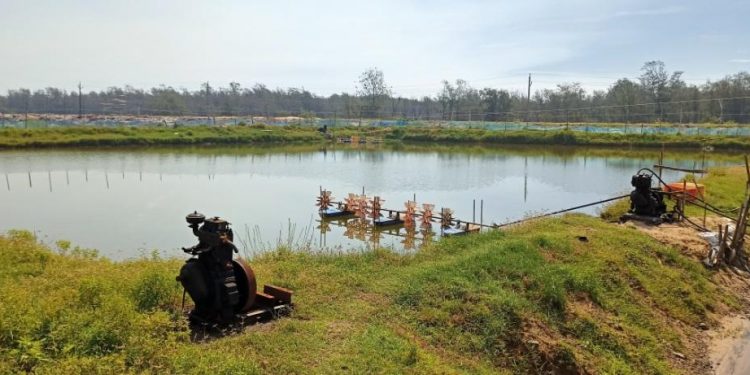Paradip: Rampant use of antibiotics and poisonous chemicals in fish and prawn cultivation has threatened to affect the lives of thousands of fishermen on the Odisha coast while also bringing ecological disaster in its wake. This has happened as some farmers are applying various antibiotics and chemicals in the ponds or gheries to raise the fish and prawns in a short period of time. Those are exported to many European countries for their high demand.
However, some European countries have banned the import of fish and prawns from the state due to the presence of hazardous chemicals. When consumed by people, the chemicals in the food items result in anemia, cancer, allergy, bone-related diseases, and intestinal diseases. Concerned over the development, the state Fisheries and Animal Resources Development department as well as the Marine Products Export Development Authority (MPEDA) has banned the use of 20 types of antibiotics in fish and prawn cultivation and has insisted on safe cultivation.
Some of the banned drugs are chloramphenicol, nitrofluorene and the additives under them like furazolidone, furaltadone, furilfauramide, nitrofurantoin, nifuratel, nifurozyme and several other antibiotics and chemicals. It is alleged that many fish farmers in Odisha are using these banned antibiotics to boost the growth of the fish and prawns. Coordinator Gayadhar Jena of MPEDA confirmed that a ship carrying prawns had to return from a foreign country without unloading the stocks only for this reason in 2022. However, the use of these antibiotics allegedly goes on unabated notwithstanding the ban order. Moreover, these prawns are consumed more in wedding feasts and in other get-togethers.
A scientist Dr Ambika Prasad Ray of Central Institute of Freshwater Aquaculture (CIFA) at Kaushalyaganga on Bhubaneswar outskirts said that the remnants of these antibiotics and chemicals remain in the body of fish and prawns after they are harvested. The use of these antibiotics has been banned considering their harmful effects on the human body. These antibiotics get mixed in the blood vessels of humans and result in various diseases. The presence of antibiotics like nitrofurantoin may even give rise to dreaded diseases like cancer, he added.
Moreover, the aquaculture farms that have sprouted along the coastline over the past few years have also polluted the rivers and creeks, poisoning the coastal waterways with the excrement and wastewater from the farms. Aquaculture farms demand artificial feed, pesticides, chemical additives, and antibiotics all the time.
Many other toxic substances and pesticides such as malathion, parathion, azodin, and paraquat are used in large-scale shrimp farming. Other ill effects of prawn farming are the conversion of the coastal ecosystem into monoculture production. Once the prawn farms are abandoned, it is expensive to make the land suitable for farming. A local fish trader Paresh Mandal said that the prawns produced here are sold at Rs 250 to Rs 500 per kg in the local market. Locals have demanded a ban on the cultivation of such fish and prawns.







































